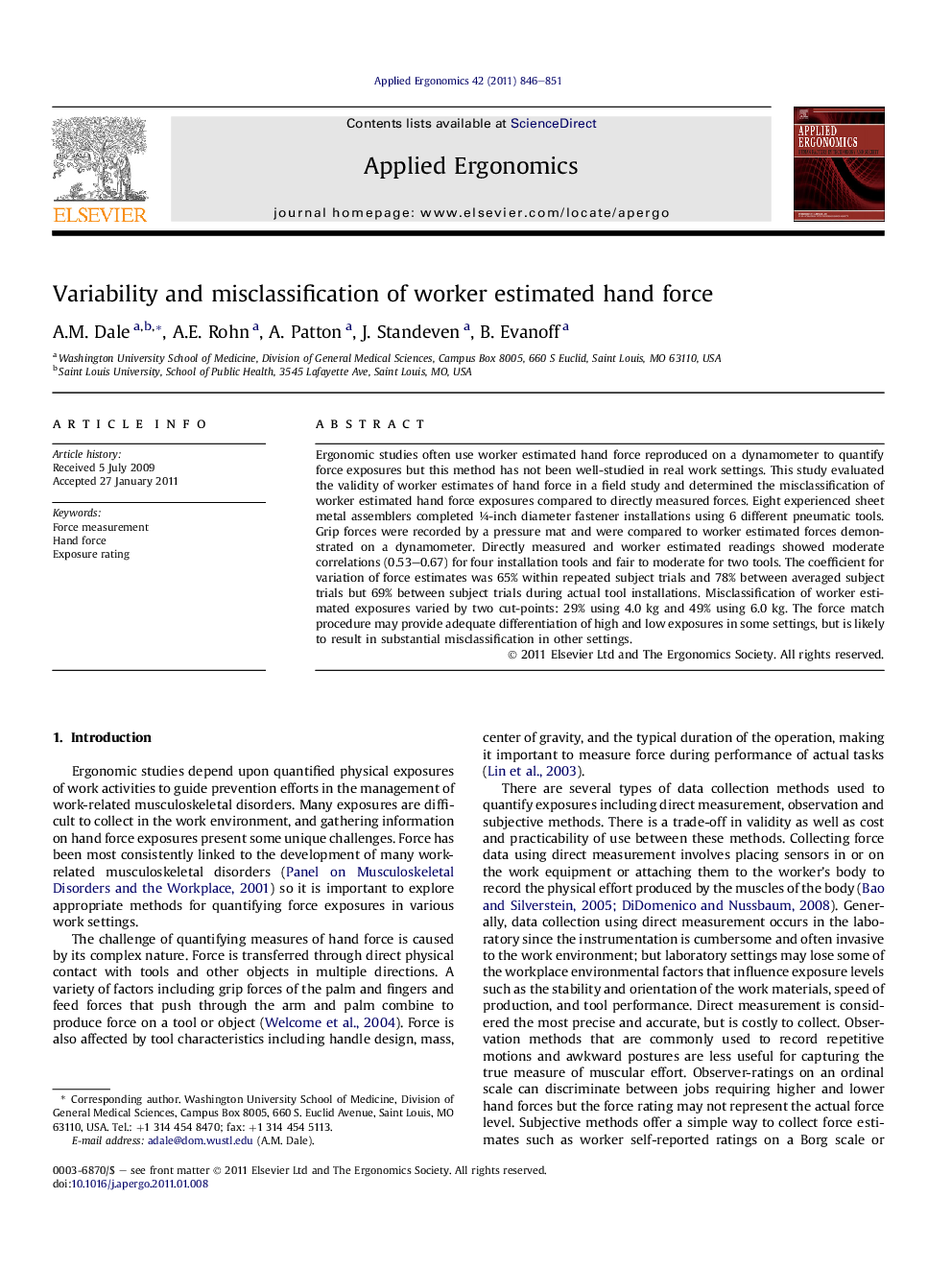| Article ID | Journal | Published Year | Pages | File Type |
|---|---|---|---|---|
| 551218 | Applied Ergonomics | 2011 | 6 Pages |
Ergonomic studies often use worker estimated hand force reproduced on a dynamometer to quantify force exposures but this method has not been well-studied in real work settings. This study evaluated the validity of worker estimates of hand force in a field study and determined the misclassification of worker estimated hand force exposures compared to directly measured forces. Eight experienced sheet metal assemblers completed ¼-inch diameter fastener installations using 6 different pneumatic tools. Grip forces were recorded by a pressure mat and were compared to worker estimated forces demonstrated on a dynamometer. Directly measured and worker estimated readings showed moderate correlations (0.53–0.67) for four installation tools and fair to moderate for two tools. The coefficient for variation of force estimates was 65% within repeated subject trials and 78% between averaged subject trials but 69% between subject trials during actual tool installations. Misclassification of worker estimated exposures varied by two cut-points: 29% using 4.0 kg and 49% using 6.0 kg. The force match procedure may provide adequate differentiation of high and low exposures in some settings, but is likely to result in substantial misclassification in other settings.
